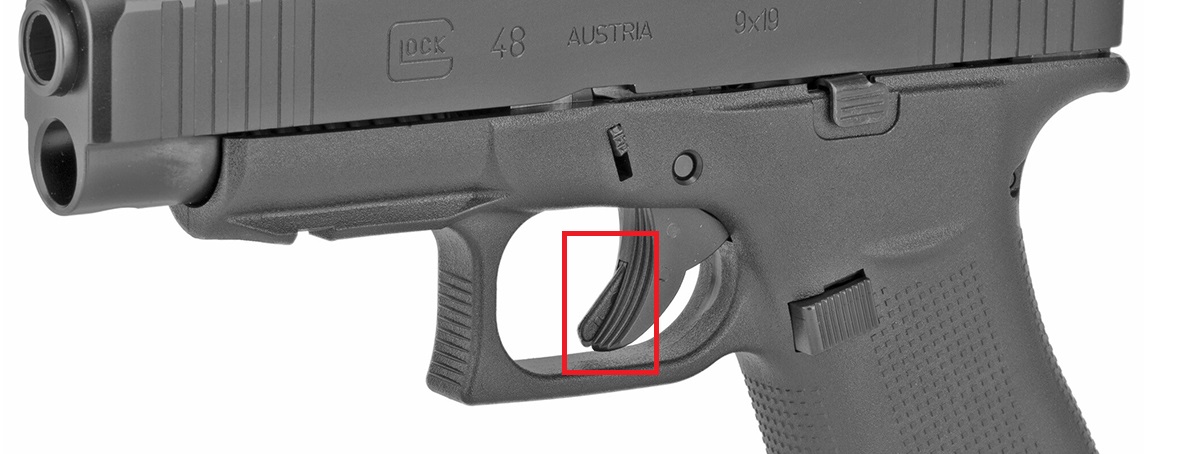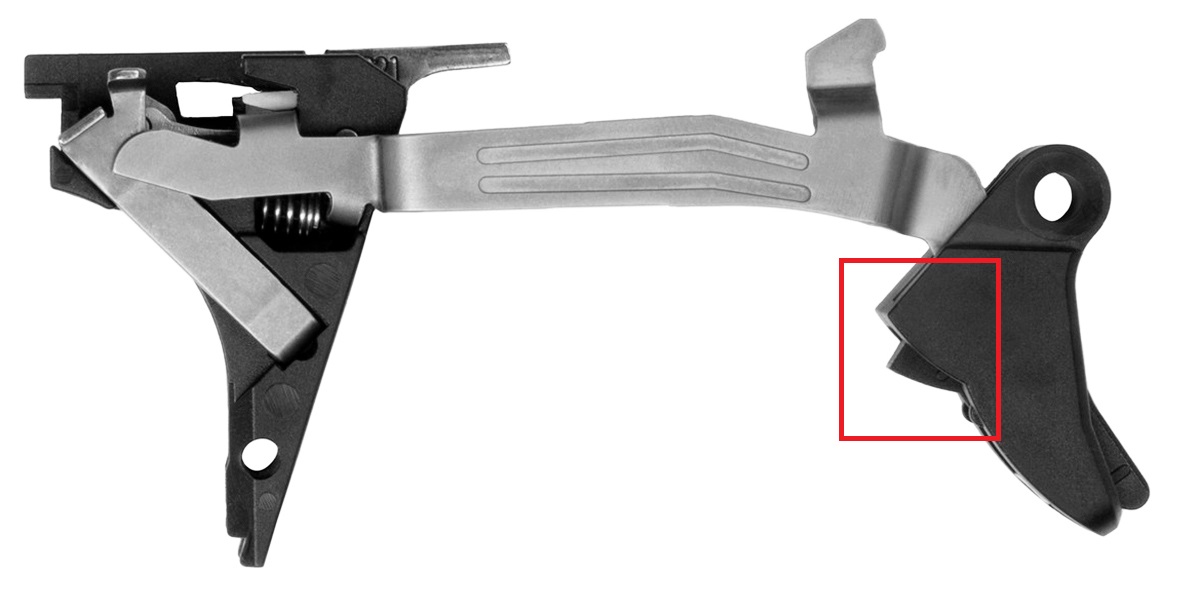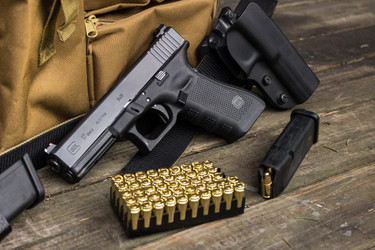How The GLOCK's Safeties Work (and FAQ)
Posted by 80-Lower.com on Mar 12th 2024
The GLOCK® is arguably the most popular handgun on Earth. Tens of millions of GLOCKs have been issued to military and law enforcement worldwide and, by the numbers, it's the preferred handgun for civilians who want a reliable concealed-carry weapon.
But the GLOCK® (and the Polymer80 pistols based on it) is unlike any other handgun in other ways -- particularly, its safeties. It has no exposed hammer, and no thumb safety. In fact, it has no manual safety of any kind. What gives? How does it work? Let's review.
How Many Safeties Does a GLOCK Have?
All GLOCK handgun models have three internal safeties: A trigger safety, firing pin safety, and drop safety. These three safeties work together in what GLOCK calls the SAFE ACTION® System.
All three safeties are automatic, meaning they all disengage when the trigger is pulled and the striker releases the firing pin, igniting the live round in the chamber. Prior to firing, the shooter doesn't need to take any other actions to disengage any safety mechanisms, like flicking a lever or pressing a button. Just draw, aim, and fire.
It's these extra few milliseconds of reaction time saved that makes GLOCK handguns so popular among law enforcement and military personnel: When facing an active threat, fewer actions and less time wasted can be the difference between life and death.
These three safeties also automatically reengage once the shooter releases the trigger.
How Does The SAFE ACTION® System Work?
The GLOCK's three safeties all work together in a sequence. First, the shooter depresses the trigger to disable the trigger safety. As the trigger depresses, the trigger bar inside the frame disables the firing pin safety. Simultaneously, the trigger bar decouples from the firing pin, disengaging the drop safety. This provides clearance for the firing pin to strike the chamber round's primer.
Let's take a closer look at each safety's components, and how they work.
Trigger Safety

The trigger safety is located inside the trigger shoe. It's the only visible, external safety found on GLOCK handguns. It's a simple design, consisting of a spring-loaded paddle located on the front of the trigger. When at rest, the opposite end of the paddle -- which protrudes behind the trigger bow -- rests against the frame, preventing the trigger from traveling rearward.

To disable the trigger safety, the shooter must fully depress the paddle with the trigger finger. The trigger safety is designed to reduce the risk of negligent discharges by preventing the trigger from fully depressing if a corner of the trigger's caught or pulled unintentionally.
Firing Pin Safety

As the trigger is depressed, the trigger bar moves rearward. The raised tab atop the trigger bar presses against the spring-loaded firing pin safety, shown immediately above. When at rest, the firing pin safety's barrel prevents the firing pin from moving forward inside the slide.
The trigger bar must push against the firing pin safety, shifting the barrel and providing clearance for the firing pin to strike the chambered round's primer.
Drop Safety

The final safety in the GLOCK's firing sequence is the drop safety. The drop safety is engaged whenever the trigger is not being pulled. While engaged, the rear of the trigger bar interlocks with the tab located at the bottom rear of the firing pin (highlighted above). This tab prevents the firing pin from "slam firing," a phenomenon wherein the pin might otherwise unintentionally drive forward and strike a chambered round if the handgun is dropped from a sufficient height.
GLOCK Safeties: Frequent Questions
Now you know how the GLOCK's three automatic safeties work. But there are plenty of questions users have about these various safety mechanisms -- especially when it comes to building a custom handgun (like a P80 pistol), swapping trigger assemblies, or upgrading your handgun with a custom slide.
Q: Are Polymer80 pistol safeties the same as the GLOCK's?
A: Yes. All Polymer80 pistols -- whether bought or built -- have the same, exact safety features as a factory GLOCK handgun. Polymer80 pistol frames and slides are designed to use Generation 3 GLOCK factory components. There is no functional difference between the GLOCK's Gen 3 and Gen 5 safety features.
Q: Can the trigger safety on a P80 or GLOCK be removed?
A: We strongly advise against doing this. The trigger safety is an integral part of the handgun's entire automatic safety system. Removing the trigger safety greatly increases the risk of a negligent discharge. With that said, the trigger safety can be removed from the GLOCK's trigger shoe without compromising the functionality of the handgun.
If your P80 or GLOCK trigger feels mushy, or suffers excessive travel, removing the trigger won't improve its performance. But plenty of aftermarket triggers (which retain the factory safety) can improve trigger feel.
DISCLAIMER: If you are new to the world of DIY gun building, you likely have a lot of questions and rightfully so. It’s an area that has a lot of questions that, without the correct answers, could have some serious implications. At GunBuilders.com, we are by no means providing this content on our website to serve as legal advice or legal counsel. We encourage each and every builder to perform their own research around their respective State laws as well as educating themselves on the Federal laws. When performing your own research, please be sure that you are getting your information from a reliable source.

